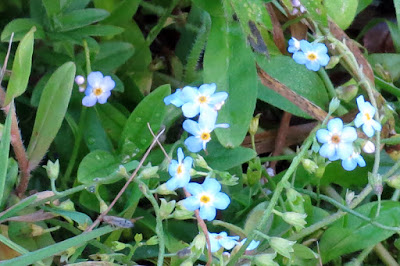8th June 2016
Adult butterflies and moths are amongst the most
attractive of species – delicate, pretty and eye-catching. Their caterpillars –
pretty or of insignificant appearance – are not always a welcome sight, especially
when munching their way through your roses or your best cashmere jumper.
Currently there is an interesting, though not
particularly attractive, display in some of Gibside’s bird cherry trees which
are festooned with the larval tents of the bird-cherry ermine moth (Yponomeuta evonymella). Apparently,
this tiny moth only breeds and feeds on the leaves of the bird-cherry tree and,
under cover of their webs, the caterpillars can cleanly strip a tree clean of
its leaves.
 |
| Larval tents in which the caterpillars can be clearly seen. |
Well, we can tolerate
nature getting on with its destructive ways, for that’s what it’s all about –
eating and reproduction. And usually
that’s about as bad as it gets in a place like this. We were somewhat taken
aback then, on our meanderings, to find one of the sheets of corrugated iron -
used to encourage snakes to bask conveniently - inconveniently part-submerged
in the Lily Pond. Number seven it was, so we know for certain that it had come
from half way up the hill towards the Monument. Who would do a thing like that?
And why? Behaviour, perhaps, intended to attract a mate.
 |
| Corrugated iron sheet dumped in Lily Pond |
We completed a few
maintenance jobs and continued our meanderings. It had been a while since our
last wander around Snipes Dene. Our rejuvenation patch – an area we had
monitored for some years following felling of the Forestry Commission’s timber
crop – was difficult to identify. There has been some planting of trees in
protective tubes, but birch, broom and others now cloak much of the valley.
Where there is less tree cover foxgloves thrive and, in some barer patches,
hare’s-tail makes an unusual appearance
 |
| Rejuvenated Snipes Dene |
 |
| A patch of Hare's-tail |
 |
| Hare's-tail |
 |
| Bird's-foot-trefoil |
 |
A carpet of buttercups and colourful grasses
in front of the Orangery |
Steve Wootten & Phil Coyne

















































